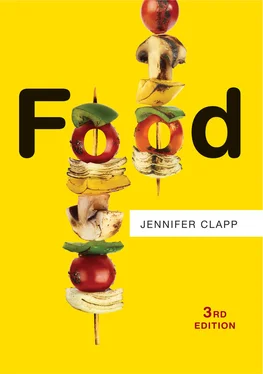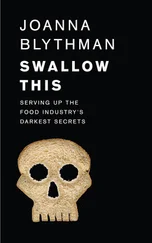Asymmetrical and volatile world food economy
A second key feature of the current world food economy is that it is highly asymmetrical along several dimensions. Some of the world’s poorest countries have become increasingly reliant on food imports to meet their needs over the past forty years. At the same time, the rich industrialized countries have experienced agricultural surpluses, and tend to export a higher percentage of their agricultural production as a result. Much of this excess production has been the product of industrialized country agricultural and trade policies, which have encouraged greater production and export of agricultural products. The prioritization of agricultural production has been perceived as a national security issue in industrialized countries, even as it had a negative impact on the ability of the world’s poorest countries to feed themselves. The irony of the situation was clear from the comments of former US President George W. Bush in a 2001 speech to the National Future Farmers Organization:
Can you imagine a country that was unable to grow enough food to feed the people? It would be a nation that would be subject to international pressure. It would be a nation at risk. And so when we’re talking about American agriculture, we’re really talking about a national security issue. 14
This asymmetry in food production between countries is exacerbated by growing asymmetries within and across societies with respect to food access. As noted above, over 820 million people are chronically undernourished, a number that has remained persistently high for decades. Although the proportion of people facing chronic undernourishment has declined overall since the 1990s, progress has been highly uneven. In sub-Saharan Africa, progress on cutting the proportion of people experiencing hunger has been very slow, while absolute numbers of hungry people have risen in recent decades, leaving the continent far from meeting global hunger reduction targets. In Latin America and Asia, both the proportion of people experiencing hunger and the absolute numbers have fallen, bringing them closer to meeting global targets for hunger reduction. Meanwhile, nearly two billion people on the planet are overnourished. Levels of obesity, for example, have doubled since 1980 to reach 670 million in 2017. Micronutrient deficiencies are also widespread, affecting some 1.5 billion people, and can accompany both over and undernutrition. 15
Layered over and related to this asymmetry is volatility in the global food system. The increased reliance on international trade, the concentrated market power of relatively few TNCs, and the growing financialization of food have together contributed to a world food economy that is more prone to abrupt changes with uneven outcomes. Rapid and sharp food price changes, as was seen in the 2007–2013 period, are likely to remain a permanent feature of the current global food system if no regulatory changes are made. The consequences of this instability are enormous, and are exacerbated by the inequalities in access to food in the present world food economy.
Ecological fragility of the global food system
Ecological fragility is a third key feature of the current world food economy. The spread of the industrial agricultural model over the past fifty to one hundred years – hybrid seeds, monoculture planting, irrigation, mechanization, and chemical inputs – has resulted in extensive negative ecological effects. The adoption of this model around the world was a key ingredient in the globalization of the world food economy. But the effects have been stark: biodiversity has been drastically reduced with a focus on relatively few species of plants grown in a monocropped fashion; soils have been depleted by mechanization and over-use; land has been poisoned by chemical fertilizers and pesticides; water has become scarcer; industrial farming methods release greenhouse gases that are associated with climate change; and the list goes on.
There is now widespread recognition of the environmental problems that stem from the “traditional” model of industrial agriculture that has characterized large-scale agricultural production in rich countries over the past century, and in poor countries as part of the Green Revolution in the past fifty to sixty years. The situation at present has been described by many as a crisis, one that is slow-developing and deeply problematic for the future of world food security. The acceleration of climate change makes this challenge all the more pressing. But while there is agreement that this basic model of industrial agriculture results in undesirable ecological damage, the future path is fraught with debate and uncertainty.
On one side of the debate are advocates of a refinement of the industrial model in a way that encourages the continuation of large-scale agriculture with the adoption of genetically modified seeds that allow crops to grow in hostile environments. Such crops could be engineered, say advocates, to withstand polluted soils and drought conditions and could also be engineered to resist pests. The embrace of genetically engineered crops, for them, is the only path forward because harsh environmental conditions will undoubtedly become more prevalent with climate change, particularly in developing countries, and specifically in Africa. The world, in other words, must be prepared for the worst or face starvation from declining harvests in a more unpredictable climate. 16
On the other side of the debate are advocates of low external input agriculture, such as agroecology, who call for more intercropping and the use of multiple traditional varieties of seeds, nourishment of the soil with organic fertilizers, and integrated pest management to reduce or eliminate pesticide use. These thinkers stress the risks associated with the wholesale embrace of genetically modified crops, which in their view only replicate the environmental problems we are already facing with industrialized agriculture. Without this diversified approach that fosters increased biodiversity by protecting traditional varieties, this view argues that agriculture will lose its resilience and become even more vulnerable to the risks of climate change. 17
The dominant actors within the current world food economy are aware of some of its shortcomings. Their approach has been to move it forward on more or less the same trajectory that guided it in the past, but with better management to avoid its most obvious pitfalls. But others are less convinced about the merits of the current organization of the world food economy, and are seeking more radical systemic change. Growing awareness of the multiple crises associated with the global food system has fostered a number of movements that seek to resist or fundamentally transform it by reclaiming or reforming governance activity in the “middle spaces” of the world food economy.
In the 1980s–1990s, a number of organizations began to promote the idea of “fair trade” in food and agriculture. An expanding network of fair trade organizations seeks to establish alternative agrifood supply chains that cut out the large TNCs from the middle arena of the world food economy so that the farmers are paid a fair price for their product. These alternative supply chains link farmer cooperatives in developing countries more directly to consumers in rich industrialized countries, reducing the mental distance between producers and consumers, and increasing compensation to farmers.
At a broader level, the idea of “food sovereignty” emerged in the 1990s. Reacting against the imbalanced deal that resulted from the inclusion of agriculture in the WTO, peasant groups in the developing world sought to resist, rather than work within, the current world food economy. Groups such as La Via Campesina, a transnational peasant movement, first articulated food sovereignty as the right of peasant and indigenous communities to determine their own agricultural and food path separately from the global food trading system. This global South movement has dovetailed with movements in the global North that have sought to promote local and indigenous food systems. These relocalization efforts in both the North and South aim to build social and ecological resilience into food systems by stressing the need to develop more sustainable and self-reliant food systems as an alternative to a singular, international trade-reliant global system.
Читать дальше












